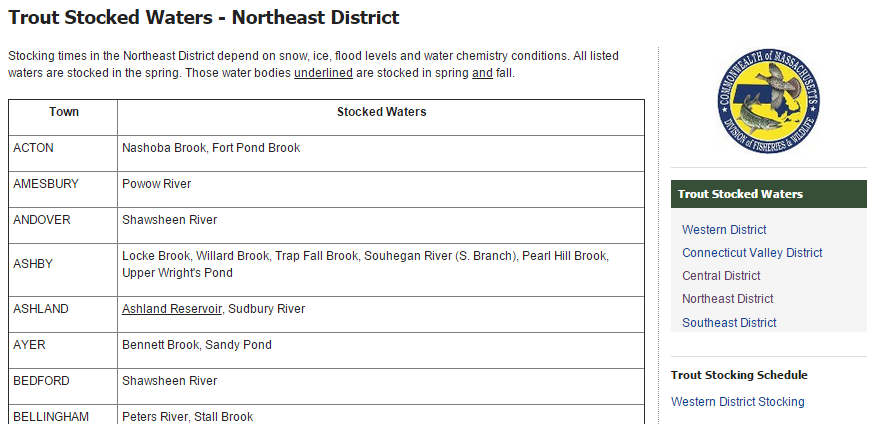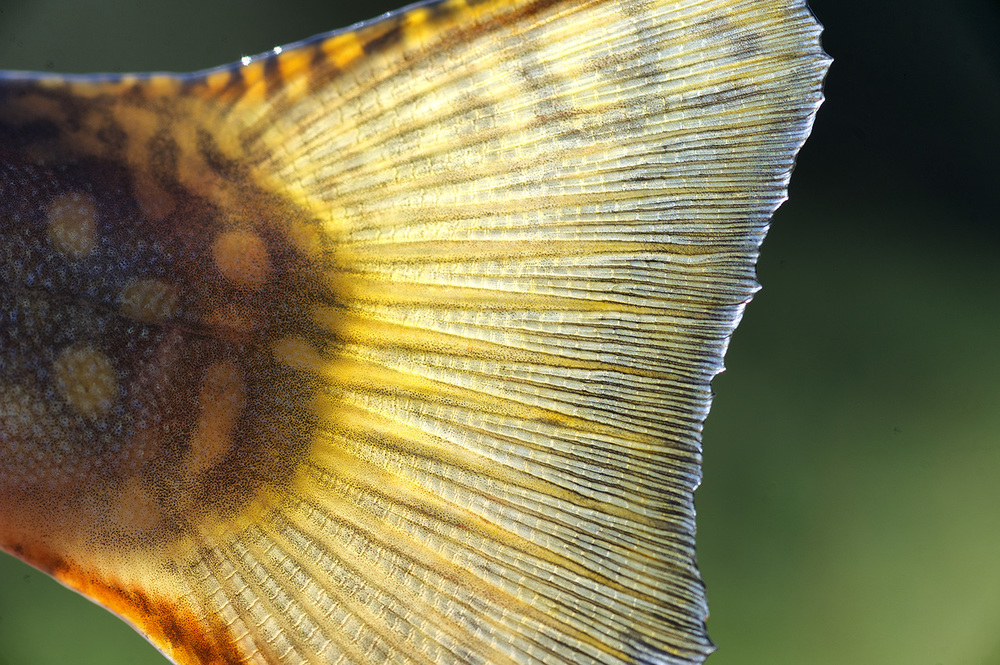Since I have been talking a lot about native brook trout, I thought I would do a quick post on telling the difference between stocked brookies and wild brookies. To be honest, it can be really hard to tell these apart, but there are a few tips that can help you tell if you’ve just discovered a new wild brookie stream, or if it’s stocked upstream.
- Check your Department of Fish and Wildlife’s “trout stocked waters list”

If you catch a trout, and aren’t sure if its native or not, the first thing you should do is check your local trout stocked waters list. Here in MA, the DFW (Department of Fish and Wildlife) does a good job of keeping an updated list of, well… trout stocked waters. If you are fishing a stream, that is not connected to any rivers that are stocked, there are clearly no stocked fish in it. So if you catch a trout there, it has to be wild. Be careful though, you’d be surprised how far stockies can travel. There was an article I saw when I was in Colorado a few years ago, about a trout tagging program. I forget the exact details, but the basic story was that a dozen stocked trout were tagged, and scientists observed where they went. A few of the trout traveled miles from where they were stocked, and went deep into tiny streams, that held wild tout. Looking at the maps, you never would have guessed stocked trout were in there. But anyways, the moral of the story is if you catch trout in a body of water that doesn’t touch a stocked river or stream, all the trout in it are most likely wild.
2. The Tail Tells the Tale
If you aren’t sure if you just caught a wild brookie, have a close look at the tail and fins. Since stocked trout spend a good bit of time in the cement holding bins, their fins often take a beating. Under close examination, you will often find that stocked trout have a lot of “fin wear”, from rubbing up against concrete walls. Now this will not always be a giveaway, because after some time, worn-out tails tend to heal, so you may not be able to tell for sure.
3. Have a Look at the Colors
Now this can be inconclusive, but often looking at a brookies’ colors can give you an idea of whether on not it is wild. From my experience, native brook trout tend to have slightly more vivid colors than stocked trout. A lot of stockies tend to be a bit “dull”, and are more pale. I usually look for very sharp and distinct blue rings, that surround the red dots, to give me a rough idea. Now you won’t always be able to tell if a trout is wild or stocked, just by looking at it, but you will find after seeing thousands of brookies, it gets easier to tell.
4. Mutant?
After years and years of trout fishing, you’ll end up catching a few “deformed” trout. I’ve caught a few with very misshapen bodies, some missing fins, and I’ve witnessed a trout with two jaws being caught! Most of the trout from hatcheries are completely normal, but every now and then, a messed up trout gets stocked. Now you probably won’t encounter a lot of these, if any, but if you do, you can be almost certain that it was stocked.
Now these are just a few tips for identifying a trout’s origin, but I’d be interested if anybody knows of any other ways to tell. It can be very tough to tell a stockie from a native, but after some experience, you’ll find it gets easier to tell. Enjoy the weekend!
Pictures from…
http://www.ginkandgasoline.com/trout-fishing/trout-deformities/




Nice post because a lot of people can't tell the difference, and it kind of an experience thing like you said. One thing to note also is that wild browns (I'm not a fan, but I'm just throwing this out there) have more spaced out spots that are larger. They also have considerably more red spots. I don't usually fish waters that have both stockers and natives, so I usually know every fish is a native.
Good tip on the brown trout! I'll keep that in mind next time I'm fishing a river that holds brownies. And I hear you about only fishing native water, I do love fishing a stream off the grid with only natives in it!
~Troy
Good post/comments. I always try to target wild only rivers but that can be tough. One of my favorite spots has both stocked and wild trout (given the complete lack of fishing pressure, I still have no idea why they stock any trout but that's a conversation for another day). I'm pretty confident there are wild trout in addition to the stockers because of the size of some brookies I catch there. I've caught them as small as 3-4" and I know they don't stock them that small. Hopefully, I'm right!
Thanks again.
– G
G,
I know what you mean!- it seems like every stream that holds native brookies also has stockies in it too. The tiny ones are almost certainly stream born; good to see some that size, but as soon as they hit 6 inches, people confuse them with the stocked trout, and bring them home and eat them. Never made sense to me why you would keep a 6 inch brook trout, when you can go catch a 12 inch stocked rainbow at almost any pond around…
~Troy